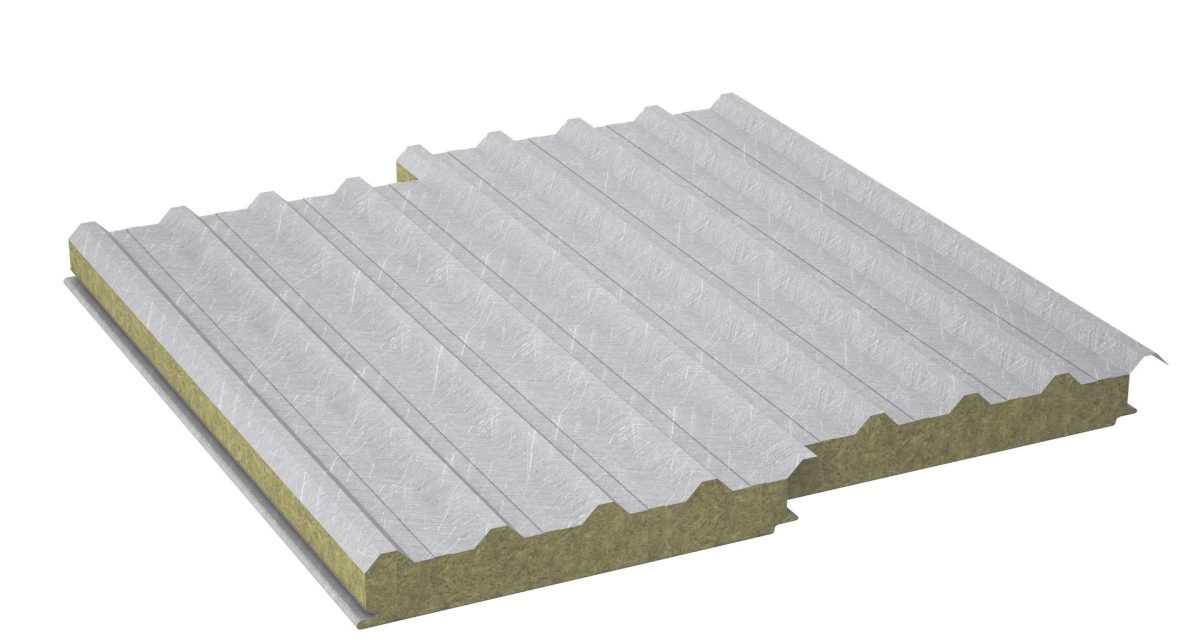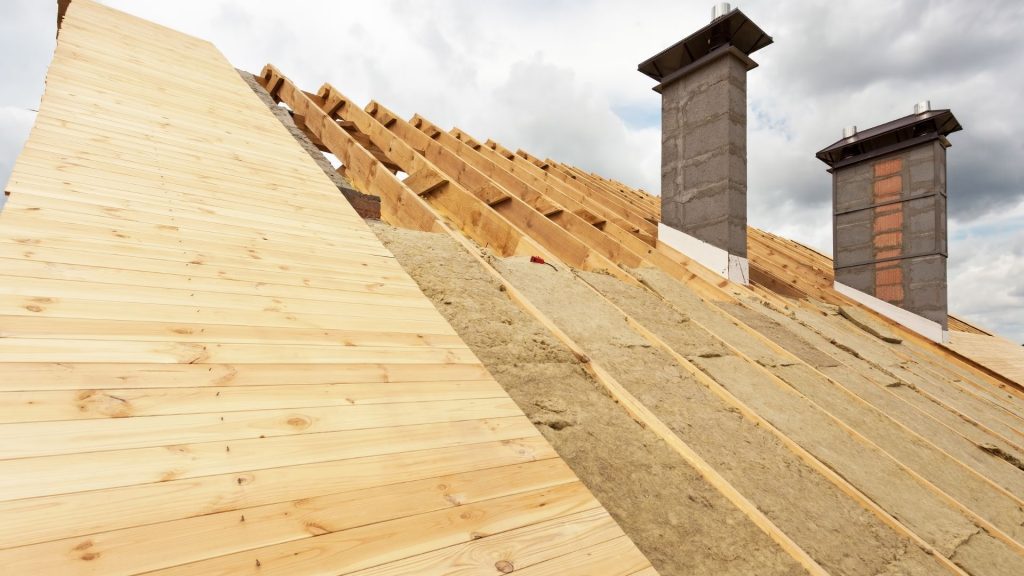Structural Insulated Panels (EPS) are typically made in a factory-controlled environment using a process that involves the following steps:
Panel Core: The core of a SIP is typically made of a rigid foam insulation material, such as expanded polystyrene (EPS), polyisocyanurate (polyiso), or polyurethane (PUR). The foam core provides the insulation properties of the panel. The foam material is cut or molded to the required dimensions and thickness for the panel.
Panel Facings: The foam core is sandwiched between two facing materials, which are typically structural oriented strand board (OSB) or plywood. These facings provide structural support and rigidity to the panel. The facings are also cut to the required dimensions.
Adhesive Application: An adhesive or bonding agent is applied to the surfaces of the foam core and the facing materials. This adhesive ensures a strong bond between the foam and the facings, creating a cohesive panel.
Assembly: The foam core is placed between the facing materials, aligning the edges and surfaces. The panel components are pressed together firmly to ensure a secure bond. The assembly may be done manually or through automated machinery.
Curing and Trimming: The assembled panels are left to cure, allowing the adhesive to fully bond the components together. Once cured, the excess foam and facing materials are trimmed, ensuring clean edges and uniform panel dimensions.
Quality Control: The completed SIPs undergo quality control checks to ensure they meet the desired specifications and standards. This may involve visual inspections, dimensional checks, and testing for structural integrity and insulation properties.
The manufacturing process for EPS may vary slightly depending on the specific manufacturer and the equipment used. Some manufacturers may incorporate additional steps, such as adding grooves or channels for electrical or plumbing installations within the panels.
By producing SIPs in a controlled factory setting, manufacturers can ensure consistent quality, precise dimensions, and optimized insulation properties. The completed panels are then transported to the construction site for installation, where they are assembled into walls, roofs, or floors to create an energy-efficient and structurally robust building envelope.
Table of Contents
ToggleHow is a SIP made?
A Structural Insulated Panel (EPS) is made through a manufacturing process that involves the following steps:
Core Material: The core of a SIP is typically made of a rigid insulation material, such as expanded polystyrene (EPS), polyisocyanurate (polyiso), or polyurethane (PUR). The core provides the panel’s insulation properties. The insulation material is typically supplied in large blocks or sheets.
Facing Material: The insulation core is sandwiched between two facing materials, which are usually oriented strand board (OSB) or plywood. The facings provide structural strength and rigidity to the panel. The facing materials are typically supplied as large sheets.
Cutting and Sizing: The insulation material, as well as the facing materials, is cut and sized to the required dimensions for the SIP panels. This can be done using specialized cutting equipment, such as hot wires or saws, to achieve precise dimensions.
Adhesive Application: An adhesive or bonding agent is applied to the surfaces of the insulation core and the facing materials. The adhesive is typically a specialized adhesive designed for bonding these specific materials. It helps create a strong bond between the insulation core and the facings.
Panel Assembly: The cut and adhesive-coated insulation core is placed between the facing materials, aligning the edges and surfaces. Pressure is applied to the assembly to ensure a strong bond between the insulation core and the facings. This can be done using hydraulic presses, rollers, or other suitable equipment.
Curing and Trimming: The assembled SIP panels are allowed to cure, giving the adhesive time to bond and harden. Once cured, any excess material is trimmed or cut away, ensuring clean edges and the desired panel dimensions.
Quality Control: The completed EPS undergo quality control checks to ensure they meet the required specifications and standards. This can include visual inspections, dimensional checks, and testing for structural integrity and insulation performance.
The manufacturing process for SIPs may vary slightly depending on the specific manufacturer and the equipment used. Some manufacturers may incorporate additional steps, such as applying sealants or coatings to enhance the panel’s performance or adding features for electrical or plumbing installations.
The finished SIP panels are then ready for transportation to the construction site, where they are assembled into walls, roofs, or floors, providing an energy-efficient and structurally strong building envelope.

What are insulated panels made of?
Insulated panels, also known as sandwich panels, are typically made of three main components:
Core Material: The core of an insulated panel provides the insulation properties. Various materials can be used as the core, including expanded polystyrene (EPS), polyurethane (PUR), polyisocyanurate (PIR), mineral wool, or phenolic foam. These materials have excellent thermal insulation properties and contribute to energy efficiency.
Facing Materials: The core material is sandwiched between two facing materials that provide structural support and protection. Common facing materials used in insulated panels include oriented strand board (OSB), plywood, metal sheets (such as steel or aluminum), fiber cement boards, or high-density polyethylene (HDPE) sheets. The choice of facing material depends on factors such as structural requirements, desired appearance, weather resistance, and specific application.
Adhesive or Bonding Agent: An adhesive or bonding agent is applied to the surfaces of the core material and facing materials to create a strong bond and ensure a cohesive panel structure. The adhesive used is typically specific to the materials being bonded and may vary depending on the manufacturer and panel type.
The combination of these three components creates a layered panel structure, with the core material providing insulation, the facing materials providing strength and protection, and the adhesive holding everything together.
The specific composition and materials used in insulated panels may vary depending on the intended application, desired performance characteristics, and regional building standards. Manufacturers may also incorporate additional layers or features into the panel design to enhance specific properties such as fire resistance, acoustic insulation, or moisture resistance.
How do SIPs go together?
Structural Insulated Panels (EPS) are designed to fit together tightly to create a strong and energy-efficient building envelope. Here’s a general guideline on how SIPs are assembled:
Panel Layout: Begin by planning the layout and orientation of the EPS according to the building design and specifications. Ensure proper alignment, especially for corners and openings.
Foundation and Floor System: Install the foundation and floor system, ensuring it is level and properly prepared to support the SIPs.
Sill Plate: Attach a sill plate, typically made of treated lumber, to the top of the foundation or floor system. The sill plate serves as a base for the SIPs and helps create a secure connection between the panels and the building structure.
Panel Placement: Lift the SIPs into position and slide them onto the sill plate. Ensure a snug fit and align the panels according to the layout plan. Use appropriate lifting equipment or manpower to safely handle and position the panels.
Fastening: Secure the SIPs to the sill plate and each other using manufacturer-recommended fasteners, such as screws or nails. Follow the manufacturer’s guidelines for spacing and placement of fasteners, typically along the edges and at specified intervals.
Panel Connections: Ensure proper alignment and fit between adjacent SIPs. Panels may have built-in tongue-and-groove or spline connections that interlock for a tight seal. Connect the panels according to the manufacturer’s instructions to ensure a continuous and airtight barrier.
Reinforcements and Openings: Install additional structural reinforcements as needed, such as headers or vertical studs, to support openings for windows, doors, or other architectural features. Follow engineering specifications and local building codes for these reinforcements.
Roof and Ceiling Connections: Secure roof panels or ceiling components to the top of the wall panels using appropriate connectors, such as clips or hangers. Ensure proper alignment and secure fastening to maintain structural integrity and weather resistance.
Sealing and Flashing: Apply sealant or adhesive along panel joints, connections, and around openings to create a weather-resistant and airtight seal. Install appropriate flashing materials to divert water away from vulnerable areas, such as windows and doors.
Finishing: Complete the installation by adding any required interior or exterior finishes, such as drywall, siding, or cladding, according to the building design and architectural plans.
It is important to follow the manufacturer’s specific installation instructions and recommendations for the SIPs being used, as they may have variations in panel design and connection methods. Consulting with a professional contractor experienced in SIP construction can provide valuable guidance and ensure proper assembly techniques are followed.
How long do SIPs last?
Structural Insulated Panels (EPS) have the potential to last for several decades when properly installed and maintained. While the exact lifespan of SIPs can vary depending on factors such as material quality, environmental conditions, and maintenance practices, they are generally expected to have a long service life.
When SIPs are manufactured using high-quality materials and installed correctly, they can provide long-lasting performance. The following factors can influence the lifespan of SIPs:
Material Quality: The quality of the SIP components, including the insulation core and facing materials, plays a significant role in determining their durability. High-quality materials that meet industry standards and have appropriate certifications are more likely to have a longer lifespan.
Installation: Proper installation techniques are crucial for the longevity of SIPs. Ensuring that EPS are correctly integrated into the building structure, with proper fastening, sealing, and flashing, can help prevent issues such as water infiltration and structural instability.
Environmental Conditions: The climatic conditions and exposure to elements like moisture, temperature fluctuations, UV radiation, and pests can affect the lifespan of SIPs. Regular maintenance and suitable protective measures can help mitigate the impact of these factors.
Maintenance: Regular inspection and maintenance practices can extend the lifespan of SIPs. This includes checking for signs of damage, repairing any issues promptly, and ensuring proper drainage and ventilation to prevent moisture-related problems.
Proper Design and Engineering: SIPs should be designed and engineered to meet local building codes and standards. Engaging professionals experienced in SIP construction can help ensure that the design factors in structural requirements and environmental considerations for optimal durability.
While there is no definitive lifespan for SIPs, they have demonstrated their ability to perform well for 50 years or more when properly cared for. Regular inspections, addressing maintenance needs promptly, and following manufacturer recommendations and industry best practices can help maximize the lifespan of SIPs and ensure their continued performance over time.



